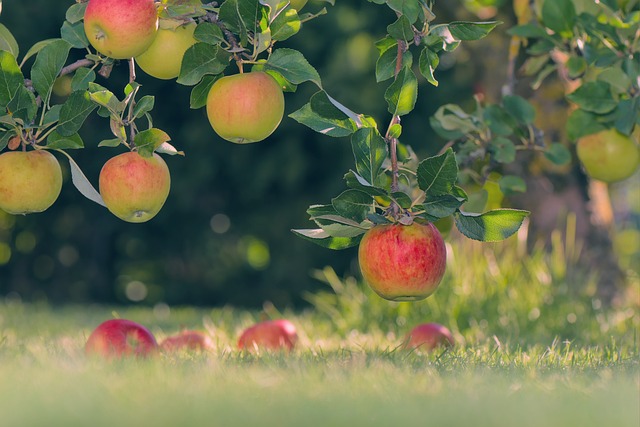
| iPhone 15 | Pixel 8 |
|---|---|
| Apple A16 chipset with much better performance | Google Tensor G3 with focus on AI and ML |
| iOS 17 | Android 14 |
| 6.1-inch with a 60Hz OLED screen | 6.20inch OLED screen with 120Hz |
| Smaller 3,349mAh battery | Larger 4,575mAh battery |
| $799 starting price | $699 starting price |
Table of Contents:
Read more:
Design and Size
The compact new norm
When it comes to design, the Pixel 8 and the iPhone 15 are similar and different at the same time. The Pixel follows the same design philosophy started by the Pixel 6 series, with a camera bar on the back and a hole-punch front camera, while the iPhone 15 unsurprisingly takes design cues from all the previous generations, starting with the iPhone 12 series.
What makes these two similar is their compact size. The screens of the Pixel 8 and iPhone 15 are very similar in size, transferring this similarity to the overall size of both devices. The Pixel 8 comes at 5.93 x 2.79 x 0.35 inches (150.5 x 70.8 x 8.9 mm), while the iPhone 15 retains its predecessor’s dimensions, measuring 5.78 x 2.81 x 0.31 inches (146.7 x 71.5 x 7.80 mm). Subjectively, these two phones look mid-sized, and even though they’re far from the iPhone mini, for example, you’ll have easier access to all sides of the screen with one hand, compared to bigger phones.
As you can see, these two are really close in size, with the iPhone 15 ending up being a tad more compact in the end. As far as materials go, both use aluminum and glass. The titanium material is reserved for the Pro models of the iPhone 15 series. There’s nothing wrong with aluminum, though, it’s a great smartphone building material. In our experience, a good grade of aircraft aluminum can rival stainless-steel and even titanium.
The port situation has been normalized by the EU, mandating USB-C on the iPhone 15 series, so there’s no more Lightning port for the iPhone. The button situation is also similar, as the new Action Button is present on the Pro models only. The color schemes for the Pixel 8 and iPhone 15 are as follows:
Pixel 8 colors:
We have a dedicated piece about the Pixel 8 series hues, so you should check it out for more detail.
iPhone 15 colors:
Again, for additional information, refer to our iPhone 15 colors article.When it comes to user experience, these two feel slightly different in the hand, especially if you used them without a case. During our time with both phones, we found that the Pixel 8 is more comfortable in the hand due to its curved design. The iPhone 15 is not far off, though, and if you’re going to use these phones with a case, then any difference is going to be mitigated.
Display Differences
Smooth wins the game
As we already mentioned above, the Pixel 8 and iPhone 15 feature very similar display panels in terms of size (6.2 inches on the Pixel 8 vs 6.1 inches on the iPhone 15). There’s one major difference, though, and it lies in the refresh rate.
The Pixel 8 adopts a variable 60-120Hz refresh rate, while Apple sticks with 60Hz for the iPhone 15. Which is really a shame, especially when other flagships and even midrange phones have already moved to higher refresh rates on their displays. Furthermore, everything looks way smoother at 120Hz, and we tested this times and again, there is a perceivable difference!
When you’re scrolling through text it moves way smoother at 120Hz, and if you play mobile games, the frame rate difference could be crucial and decide your win. We’ve tried both the iPhone 15 and the Pixel 8, and the latter feels way smoother in the aforementioned tasks.
The resolution of the Pixel 8 is FHD+ (1080 x 2400 pixels, 428 PPI), and according to Google it can output 1,400 nits in HDR mode and up to 2,000 nits peak brightness. The iPhone 15 features an OLED display with 2556 x 1179 pixels resolution, which translates to 461 PPI pixel density.
Apple also cites up to 2,000 nits of peak brightness, so both phones are again very similar in that regard. In real-world scenarios, as shown by our display tests, the Pixel 8 gets brighter, and it’s also a tad more color accurate.
According to our tests, there’s a clear winner in the display department, and it’s the Pixel 8, even though both phones have excellent displays that won’t disappoint. Well, the 60Hz refresh rate on the iPhone 15 isn’t ideal, for sure.
We use professional software and specialized equipment to measure how much light the screens can produce and how accurate the colors are. We make sure to do these tests in a controlled environment to avoid any outside factors messing with the results.
We also check the brightness across a large part of the screen to give you results that are closer to real-world use. Unlike many manufacturers who boast super high peak brightness numbers that only apply to a small portion of pixels for a short time, our measurements are more realistic.
As far as biometrics go, things haven’t changed since last generation for both the Pixel 8 and iPhone 15. The former comes with an under-display fingerprint scanner, plus the image-based Face Unlock option (which can now be used with sensitive apps like banking), while the latter relies solely on Face ID.
We tested every unlock option continuously and reach the conclusion that the iPhone 15 is faster to unlock, and also more reliable but the Pixel 8 has improved compared to the previous two generations.
Performance and Software
Apples and oranges?
There are some radical differences when it comes to hardware and software between iOS and Android devices, and the Pixel 8 and iPhone 15 are stark examples. Let’s take RAM, for example. It’s not all created equal when we talk about iPhones and other Android phones, mainly because the apps and OS components are much more optimized on iOS and thus require less RAM to run smoothly. The Pixel 8 has 8GB of RAM onboard, while the iPhone 15 manages to do pretty much the same job with only 6GB.
The same goes for the software; iOS is different than Android in many ways, although both serve the same purpose and, in the end, do the same thing. The Pixel 8 ships with Android 14 onboard, and you can check out our preview for a deep dive, while the iPhone 15 runs iOS 17. We have a detailed review of Apple’s new OS as well, so be sure to check this one too.
Looking at the synthetic benchmarks below, it’s clear to see that the iPhone 15 wins everything hands down, and the new Tensor G3, even though a clear upgrade compared to its predecessor, is not a match to the A16. In real life,4 both phones work smoothly, and you probably won’t notice much of a difference. But for the sake of this comparison, the iPhone 15 wins this round.
In real-life scenarios, both phones seem pretty fast, and even though the Pixel 8 can be a little hesitant occasionally, we attribute that to the ecosystem and the less wiggle room from the Tensor G3. If you need sheer power, we recommend the iPhone 15, as it has a lot of it.
Performance Benchmarks:
It used to be that iPhones got the longest software support, but not anymore. The iPhone 15 is expected to receive five years of major OS updates, while the Pixel 8 gets a commitment of seven years of major upgrades, all the way until 2030. Impressive!
Camera
More similar than different
In the camera department, there are more similarities than differences. The iPhone 15 sports a new main camera sensor, a 48MP one with a 1/1.5″ size, which is a 27% increase for the iPhone 15 over the 14 series. The main camera of the Pixel 8, on the other hand, features a 50MP 1/1.31″ sensor, under a lens with f/1.68 aperture. In reality, both phones should produce similar results, with the main differences coming from the post-processing algorithms.
Main Camera – Daytime Photos
The samples from the main camera are pretty close in quality with good level of detail and decent dynamic range. One thing that sticks out is that the Pixel 8 produces colder photos, which are also a tad darker than the shots done with the iPhone 15. But overall, great results from both phones.
Main Camera – Low-light / Night Photos
Night shots are also very similar between the Pixel 8 and the iPhone 15 but the Pixel does a better job at handling those flares and light artifacts, while the iPhone 15 is letting them run loose. Furthermore, the Pixel 8 seems to produce brighter night shots with just a tad more detail.
Zoom Quality
Neither of these phones has a dedicated telephoto camera, so they both rely on crops and software algorithms. Looking at the samples, it seems that the iPhone 15 is doing slightly better job at 5X, while the Pixel tends to oversharpen the image.
Portrait Mode
When it comes to portraits, we have to say that the iPhone 15 produces much more natural images, with natural bokeh, while the Pixel 8 goes to extremes and the end results look like a collage from the early 2000s. Maybe it’s down to settings and tweaking things up but as it stands, the iPhone 15 wins this round.
Ultra-wide Camera
The ultra-wide cameras on both phones are again very similar, with 12 MP sensors and f/2.2 apertures. Unsurprisingly, the results are very similar, with the same difference in tonality we’ve already noticed from the main camera comparison. The Pixel 8 tends to snap colder images, and the iPhone 15 has some trouble with glare and lighting in night conditions.
Selfies
Selfies are good on both phones, but the Pixel 8 tends to elongate and soften the face of the subject, and if we’re to pick a winner here, it’d be the iPhone 15. The selfies look a tad more natural on the iPhone.
Where the Pixel 8 shines is the sheer number of camera features Google has baked inside the camera system. The list of features is surprisingly long: Magic Eraser, Photo Unblur, HDR+, Magic Editor, Night Sight, Astrophotography are only a few of those features.
Video Quality
The video quality looks great on both phones, but the Pixel 8 seems to produce brighter frames. The image stabilization is a tad better on the iPhone, as is the zoomed video sample. In night mode or low-light conditions both phones perform admirably, with the Pixel 8 even resolving more detail at times, and boasting better dynamic range.
Overall, Google has done a great job with the Pixel 8 series in terms of photo and video quality, and it’s largely down to processing algorithms. You can check out the results of our Blind test camera comparison and get surprised by the results!
Battery Life and Charging
USB-C for everyone!
This year we wave goodbye to the Lightning port, for better or worse (mostly for the better, if you ask us). Sadly, despite the new port, charging and transfer speeds remain unchanged on the iPhone 15 Plus. Apple cites 50% battery in 30 minutes with a 20W wired charger so it’s the same old, same old.
The Pixel 8, on the other hand, comes with a 4W bump in charging speed, bringing wired fast charging to 27W, which is pretty close to the iPhone 15. Wireless charging is present on both devices, with MagSafe reserved for the iPhone, and 18W wireless charging support on the Pixel 8.
PhoneArena Charging Test Results:
The Pixel 8 has a slightly bigger battery than its predecessor, clocking in at 4,575 mAh. The iPhone 15 also gets a slight capacity bump in comparison to the iPhone 14. The results of our battery tests are below:
PhoneArena Battery Test Results:
The Pixel 8 outperforms the iPhone 15 by roughly two hours in our browsing and video streaming tests. We’ll have to run the gaming test again, as we ran into some issues, but it’s safe to say that the Pixel 8 is better and more efficient than the iPhone 15 when it comes to stamina and battery life.
UPDATE: We’ve redone the 3D gaming benches on the Pixel 8 and the results stand. It seems that the Tensor G3 is still not as efficient as other chipsets on the market. Over 6 hours of 3D gaming is not a bad result per se, but it falls 2 hours short of the iPhone 15 result.
Specs Comparison
| Specs | iPhone 15 | Pixel 8 |
|---|---|---|
| Dimensions | 146.7 x 71.5 x 7.80 mm 171 grams |
150.5 x 70.8 x 8.9 mm 187 grams |
| Screen | 6.1-inch, 60Hz | 6.17-inch, 60-120Hz |
| Processor | Apple A16 Bionic | Google Tensor G3 |
| RAM, Storage and Price | 6GB, 128GB, $799 6GB, 256GB 6GB, 512GB |
8GB, 128GB, $699 8GB, 256GB |
| Cameras | 48MP wide 12MP ultrawide |
50MP wide 12MP ultrawide |
| Battery Size | 3,349 mAh | 4,575 mAh |
| Charging Speeds | 25W wired 15W MagSafe |
27W wired 18W wireless |
Summary
So there you have it! Our comparison of the Pixel 8 and the iPhone 15! These animals roam different territories of the smartphone jungle, and yet they’re starting to meet each other from time to time. Both offer similar performance, features, camera experiences, and compact sizes, and both come with similar battery life and charging speeds.
Which one should you choose, then? Well, it depends on two things, basically. First, the price. The iPhone 15 starts at $799, as per tradition, while the Pixel 8 — while slightly pricier than its predecessor — is still a $100 cheaper than the iPhone.
The second major factor is the ecosystem. If you’re using plenty of Apple devices, switching to a Pixel won’t make much sense, apart from exploring something different on its own. If you’re coming from a heavy Android background, you have more wiggle room, so to speak.
You can opt for the Pixel and get that definitive Android experience with fast feature drops and the latest updates, and you can also use the iPhone 15 as a gateway to Apple’s ecosystem.
Finally, you can hold your horses and wait for the Pixel 9 series to land (August 18), and alternatively, the iPhone 16 series (around September 22). The fight is shaping out to be a fierce one with substantial hardware and software changes.







